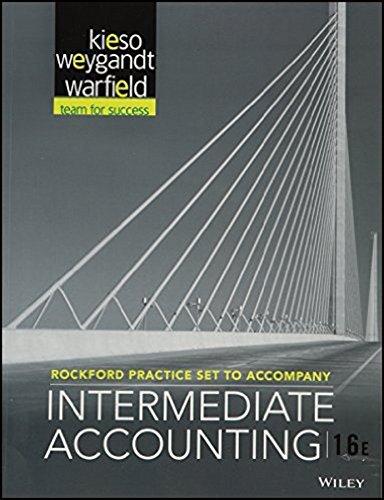Question
1. Hamilton, which uses a process-costing system, had a balance in its Work-in-Process account of $68,000 on January 1. The account was charged with direct
1. Hamilton, which uses a process-costing system, had a balance in its Work-in-Process account of $68,000 on January 1. The account was charged with direct materials, direct labor, and manufacturing overhead of $450,000 throughout the year. If a review of the accounting records determined that $86,000 of goods were still in production at year-end, Hamilton should make a journal entry on December 31 that includes: Select one: a. a debit to Cost of Goods Sold for $432,000. b. a credit to Finished-Goods Inventory for $432,000. c. a credit to Work-in-Process Inventory for $432,000. d. a debit to Finished-Goods Inventory for $86,000. e. a credit to Work-in-Process Inventory for $86,000.
2.The true statement about cost behavior is that: Select one: a. variable costs are constant on a per-unit basis and change in total as activity changes. b. fixed costs are constant on a per-unit basis and change in total as activity changes. c. fixed costs are constant on a per-unit basis and constant in total as activity changes. d. variable costs change on a per-unit basis and change in total as activity changes. e. variable costs are constant on a per-unit basis and are constant in total as activity changes.
3. Idaho Corporation recently implemented a just-in-time (JIT) production system along with a series of continuous improvement programs. If the firm is now considering adopting a total quality management (TQM) program, it would likely find that TQM: Select one: a. is consistent with both JIT and continuous improvement. b. is consistent with JIT but inconsistent with continuous improvement. c. is consistent with continuous improvement but inconsistent with JIT. d. is inconsistent with both JIT and continuous improvement. e. is an antiquated management technique.
4.Forest Company, which uses a weighted-average process-costing system, had 7,000 units in production at the end of the current period that were 60% complete. Material A is introduced at the beginning of the process; material B is introduced at the end of the process; and conversion cost is introduced evenly throughout manufacturing. Equivalent-unit production costs follow. Material A: $12.50 Material B: $2.00 Conversion cost: $6.60 The cost of the company's ending work-in-process inventory is: Select one: a. $88,620. b. $115,220. c. $123,620. d. $147,700. e. some other amount.
5. Xin Co., had 3,000 units of work in process on April 1 that were 60% complete. During April, 10,000 units were completed and as of April 30, 4,000 units that were 40% complete remained in production. How many units were started during April? Select one: a. 8,600. b. 9,800. c. 11,000. d. 12,200. e. None of these.
6. For the year just ended, Cole Corporation's manufacturing costs (raw materials used, direct labor, and manufacturing overhead) totaled $1,500,000. Beginning and ending work-in-process inventories were $60,000 and $90,000, respectively. Cole's balance sheet also revealed respective beginning and ending finished-goods inventories of $250,000 and $180,000. On the basis of this information, how much would the company report as cost of goods manufactured (CGM) and cost of goods sold (CGS)? Select one: a. CGM, $1,430,000; CGS, $1,460,000. b. CGM, $1,470,000; CGS, $1,540,000. c. CGM, $1,530,000; CGS, $1,460,000. d. CGM, $1,570,000; CGS, $1,540,000. e. Some other amounts.
7.Yes! Co., had 3,000 units of work in process on April 1 that were 60% complete. During April, 11,000 units were started and as of April 30, 4,000 units that were 40% complete remained in production. How many units were completed during April? Select one: a. 10,000. b. 9,800. c. 11,000. d. 12,200. e. None of these.
8. Which of the following employees would not be classified as indirect labor? Select one: a. Plant Custodian. b. Salesperson. c. Assembler of wooden furniture. d. Plant security guard. e. Choices "B" and "C."
9. Employee empowerment involves encouraging and authorizing workers to take initiatives to: Select one: a. improve operations. b. reduce costs. c. improve product quality. d. improve customer service. e. All of these.
10. The term "normal costing" refers to the use of: Select one: a. job-costing systems. b. computerized accounting systems. c. targeted overhead rates. d. predetermined overhead rates. e. actual overhead rates.
Step by Step Solution
There are 3 Steps involved in it
Step: 1

Get Instant Access to Expert-Tailored Solutions
See step-by-step solutions with expert insights and AI powered tools for academic success
Step: 2

Step: 3

Ace Your Homework with AI
Get the answers you need in no time with our AI-driven, step-by-step assistance
Get Started


